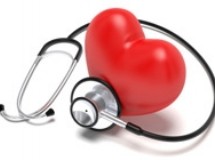Endometriosis affects five to 10 percent of women and can cause infertility.
The primary cause remains a mystery and a treatment that fully cures endometriosis has yet to be developed.
Medical evidence dose not support one specific type of treatment.
Medical treatment provides suitable pain relief but the treatment will not resolve infertility.
Surgical treatment is the preferred endometriosis treatment for infertility and provides long-term pain relief.
Reducing menstruation is the most common medical therapy used for treating endometriosis.
The disease gets progressively worse as menstrual cycles continue and is likely to remain problematic as long as menstruation persists.
Fortunately, symptoms will minimize with proper treatment.
While choosing a treatment plan consider individual needs, symptoms, age, and fertility wishes and openly discuss treatment options with a qualified physician to determine a long-term, holistic, treatment plan that best suits individual wishes.
For many women, this may be a combination many different treatments.
Surgery is definitely an option.
Endometriosis is caused from endometrial tissue on the ovaries, fallopian tubes or other abnormal sites.
The goal of surgery is to remove endometrial lesions.
Laparoscopic surgery is the only way to diagnose endometriosis and in most cases, a skilled surgeon can diagnosed and remove all lesions, cysts, and adhesions at the same time, although a full abdominal incision called, a laparotomy may still be required in rare cases.
For women, with intolerable pain, that are no longer worried about childbearing, should consider a bilateral oophorectomy and hysterectomy as treatment option.
Hormonal Therapies are also an option.
Endometriosis is aggravated by menstruation, so hormonal treatments that reduce menstruation relieve symptoms.
Treatments Include: The combined oral contraceptive pill (OC) contain two hormones, estrogen and progestin.
They work by stopping ovulation by making the lining of the uterus thinner.
The ovary secretes Progesterone in the second two weeks of the menstrual cycle.
Progesterone or progesterone-like substances called progestogens or progestins are also ingested by women in birth control pills, menopausal hormone replacement therapy, or just sometimes to induce or regulate a menstrual period.
Mirena (IUD)) is a hormone-releasing system placed in your uterus to prevent pregnancy and treats heavy periods in women who choose intrauterine contraception.
GnRH-analogues (agonists and antagonists) are considered one of the most significant events in the development of in vitro fertilization and embryo transfer.
Danazol is a synthetic steroid derived from ethisterone.
It is a white to pale yellow crystalline powder, practically insoluble or insoluble in water, and sparingly soluble in alcohol.
Aromatase Inhibitors stop the production of estrogen in post-menopausal women.
Aromatase inhibitors work by blocking the enzyme aromatase, which turns another enzyme, androgen, into small amounts of estrogen in the body.
Aromatase inhibitors do not stop the ovaries from making estrogen, so aromatase inhibitors only work in post-menopausal women.
Hormonal therapies have varying side effects and, pain relief may be only temporary.
Pain Treatment.
Pelvic pain is one of the most common symptoms of Endometriosis.
The pain may be and debilitating and either constant, intermittent or only painful during the menstrual period.
The pain can be treated in several ways including: Simple Analgesics are a group of drugs that include anti-inflammatory drugs (non-steroidal anti-inflammatory) and paracetamol.
Compound Analgesics are an analgesic with more than one active ingredient.
This includes many of the stronger prescription analgesics.
Mild Narcotics such as codeine usually derived from opium or morphine and used as a cough suppressant, analgesic, and hypnotic.
Narcotic Analgesics such as morphine s are a chemical that work by binding to receptors that are found in the central nervous system and the gastrointestinal tract.
Perhaps nutritional therapy is more your style.
A balanced diet is essential for life and proper nutrition helps improve general health.
For a woman with endometriosis, Nutritional Therapy helps them tolerate medical treatments, increase ability to deal with side effects, increase energy, and enhance ability to think.
Nutritionists help sooth women with endometriosis by organizing an appropriate dietary plan.
Therapies Beyond Mainstream Medical Community.
There is no clinical evidence as to the effectiveness of these therapies but many women with endometriosis report have symptom relief by using these non conventional therapies: Homeopathy uses the patient's physical and psychological state in recommending remedies based on the totality of symptoms.
Osteopathy emphasizes the role of the musculoskeletal system in health and disease.
Herbs are plants often used to relieve depression and stress.
Traditional Chinese Medicine uses the observation of nature, the cosmos, and the human body to comprise treatments that include herbs, acupuncture, dietary therapy, and massage.
Your emotional wellbeing is important to healing.
Endometriosis affects more than just the physical body it has profound influence on emotional wellbeing as well.
Psychologists and counselors providing support by helping suffers cope with the feelings of confusion, pain, infertility, and frustration that often accompany Endometriosis.
When treatments includes an exercise and programs such as yoga, or Pilates, suffers become more equipped to reduce stress, anxiety and support groups play a vital role in learning to cope with the disease.
Although there is no cure for endometriosis, treatment helps.
Pain levels and pregnancy plans determine treatment.
Endometriosis therapies reduce pain, lower estrogen levels, and lower stress and anxiety.
There are many options, so what are you waiting for, ask you doctor.
The primary cause remains a mystery and a treatment that fully cures endometriosis has yet to be developed.
Medical evidence dose not support one specific type of treatment.
Medical treatment provides suitable pain relief but the treatment will not resolve infertility.
Surgical treatment is the preferred endometriosis treatment for infertility and provides long-term pain relief.
Reducing menstruation is the most common medical therapy used for treating endometriosis.
The disease gets progressively worse as menstrual cycles continue and is likely to remain problematic as long as menstruation persists.
Fortunately, symptoms will minimize with proper treatment.
While choosing a treatment plan consider individual needs, symptoms, age, and fertility wishes and openly discuss treatment options with a qualified physician to determine a long-term, holistic, treatment plan that best suits individual wishes.
For many women, this may be a combination many different treatments.
Surgery is definitely an option.
Endometriosis is caused from endometrial tissue on the ovaries, fallopian tubes or other abnormal sites.
The goal of surgery is to remove endometrial lesions.
Laparoscopic surgery is the only way to diagnose endometriosis and in most cases, a skilled surgeon can diagnosed and remove all lesions, cysts, and adhesions at the same time, although a full abdominal incision called, a laparotomy may still be required in rare cases.
For women, with intolerable pain, that are no longer worried about childbearing, should consider a bilateral oophorectomy and hysterectomy as treatment option.
Hormonal Therapies are also an option.
Endometriosis is aggravated by menstruation, so hormonal treatments that reduce menstruation relieve symptoms.
Treatments Include: The combined oral contraceptive pill (OC) contain two hormones, estrogen and progestin.
They work by stopping ovulation by making the lining of the uterus thinner.
The ovary secretes Progesterone in the second two weeks of the menstrual cycle.
Progesterone or progesterone-like substances called progestogens or progestins are also ingested by women in birth control pills, menopausal hormone replacement therapy, or just sometimes to induce or regulate a menstrual period.
Mirena (IUD)) is a hormone-releasing system placed in your uterus to prevent pregnancy and treats heavy periods in women who choose intrauterine contraception.
GnRH-analogues (agonists and antagonists) are considered one of the most significant events in the development of in vitro fertilization and embryo transfer.
Danazol is a synthetic steroid derived from ethisterone.
It is a white to pale yellow crystalline powder, practically insoluble or insoluble in water, and sparingly soluble in alcohol.
Aromatase Inhibitors stop the production of estrogen in post-menopausal women.
Aromatase inhibitors work by blocking the enzyme aromatase, which turns another enzyme, androgen, into small amounts of estrogen in the body.
Aromatase inhibitors do not stop the ovaries from making estrogen, so aromatase inhibitors only work in post-menopausal women.
Hormonal therapies have varying side effects and, pain relief may be only temporary.
Pain Treatment.
Pelvic pain is one of the most common symptoms of Endometriosis.
The pain may be and debilitating and either constant, intermittent or only painful during the menstrual period.
The pain can be treated in several ways including: Simple Analgesics are a group of drugs that include anti-inflammatory drugs (non-steroidal anti-inflammatory) and paracetamol.
Compound Analgesics are an analgesic with more than one active ingredient.
This includes many of the stronger prescription analgesics.
Mild Narcotics such as codeine usually derived from opium or morphine and used as a cough suppressant, analgesic, and hypnotic.
Narcotic Analgesics such as morphine s are a chemical that work by binding to receptors that are found in the central nervous system and the gastrointestinal tract.
Perhaps nutritional therapy is more your style.
A balanced diet is essential for life and proper nutrition helps improve general health.
For a woman with endometriosis, Nutritional Therapy helps them tolerate medical treatments, increase ability to deal with side effects, increase energy, and enhance ability to think.
Nutritionists help sooth women with endometriosis by organizing an appropriate dietary plan.
Therapies Beyond Mainstream Medical Community.
There is no clinical evidence as to the effectiveness of these therapies but many women with endometriosis report have symptom relief by using these non conventional therapies: Homeopathy uses the patient's physical and psychological state in recommending remedies based on the totality of symptoms.
Osteopathy emphasizes the role of the musculoskeletal system in health and disease.
Herbs are plants often used to relieve depression and stress.
Traditional Chinese Medicine uses the observation of nature, the cosmos, and the human body to comprise treatments that include herbs, acupuncture, dietary therapy, and massage.
Your emotional wellbeing is important to healing.
Endometriosis affects more than just the physical body it has profound influence on emotional wellbeing as well.
Psychologists and counselors providing support by helping suffers cope with the feelings of confusion, pain, infertility, and frustration that often accompany Endometriosis.
When treatments includes an exercise and programs such as yoga, or Pilates, suffers become more equipped to reduce stress, anxiety and support groups play a vital role in learning to cope with the disease.
Although there is no cure for endometriosis, treatment helps.
Pain levels and pregnancy plans determine treatment.
Endometriosis therapies reduce pain, lower estrogen levels, and lower stress and anxiety.
There are many options, so what are you waiting for, ask you doctor.
SHARE





































